Best Ruby Ring Settings
Choosing the best ruby ring settings is essential for enhancing the gemstone’s brilliance, ensuring durability, and reflecting personal style. Since rubies are one of the hardest gemstones, ranking 9 on the Mohs hardness scale, they are suitable for various settings. However, the ideal setting should provide security, aesthetics, and longevity while complementing the ruby’s deep red color.
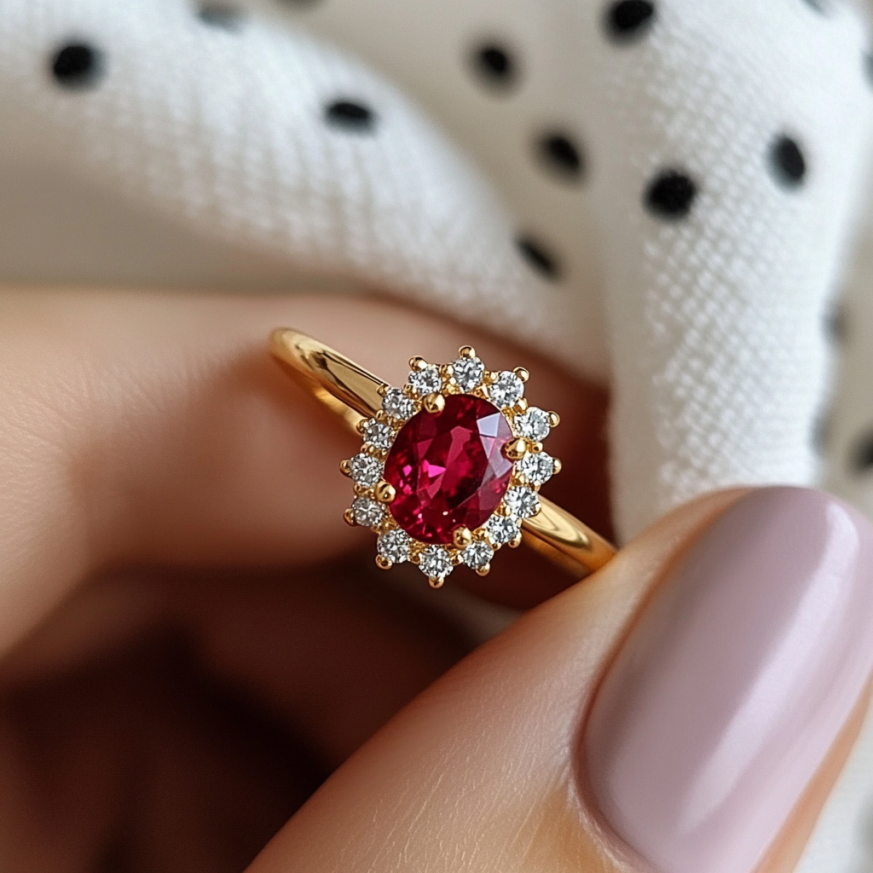
1. Prong Setting – Classic and Elegant
A prong setting holds the ruby in place with small metal prongs, allowing maximum light exposure for enhanced brilliance.
Advantages:
- Maximizes the ruby’s visibility and sparkle.
- Works well with various ruby cuts, such as oval, round, and cushion.
- Classic and timeless appeal.
Considerations:
- Requires regular maintenance to ensure prongs remain secure.
- Less protective than bezel or halo settings, making it more prone to impact damage.
2. Bezel Setting – Maximum Protection
A bezel setting surrounds the ruby with a thin metal rim, offering superior protection against damage.
Advantages:
- Provides excellent durability, making it ideal for everyday wear.
- Prevents accidental knocks or chipping, especially for active individuals.
- Creates a sleek, modern look.
Considerations:
- Reduces the amount of light entering the ruby, which may slightly affect its brilliance.
- Can make the gemstone appear slightly smaller due to the metal encasing.
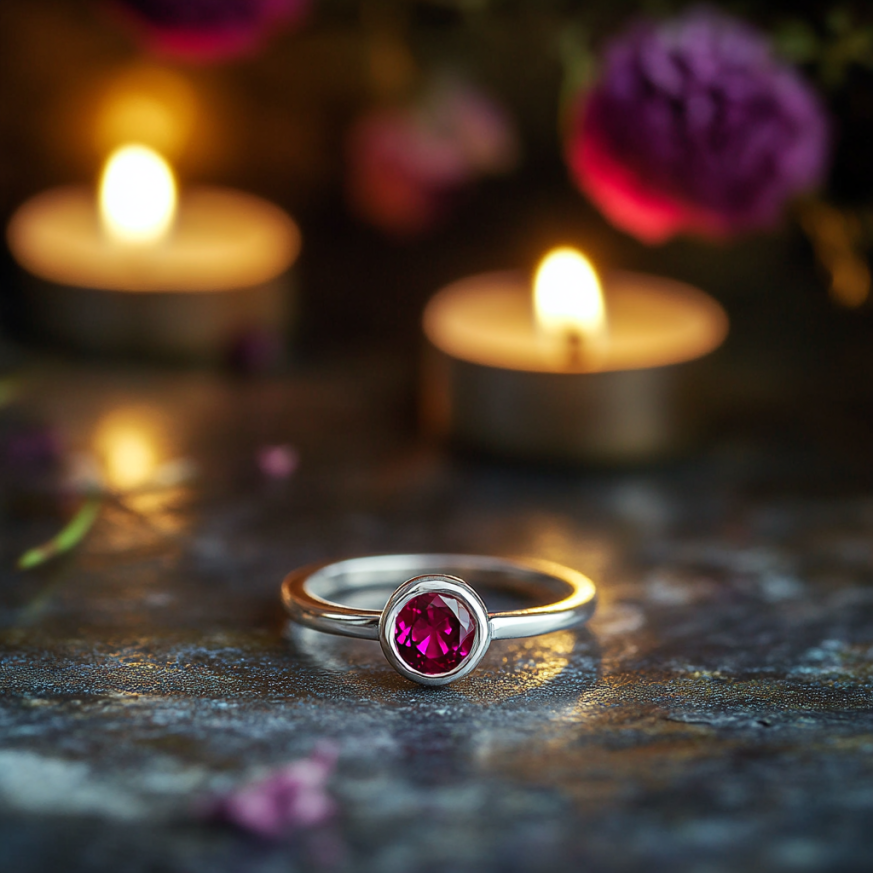
3. Halo Setting – Enhancing Sparkle and Size
A halo setting features a central ruby surrounded by smaller diamonds or gemstones, amplifying its brilliance and perceived size.
Advantages:
- Adds extra sparkle by reflecting light from the surrounding stones.
- Creates the illusion of a larger ruby.
- Elegant and luxurious design.
Considerations:
- Requires regular cleaning to maintain the brilliance of multiple stones.
- More delicate than simple settings, requiring careful handling.
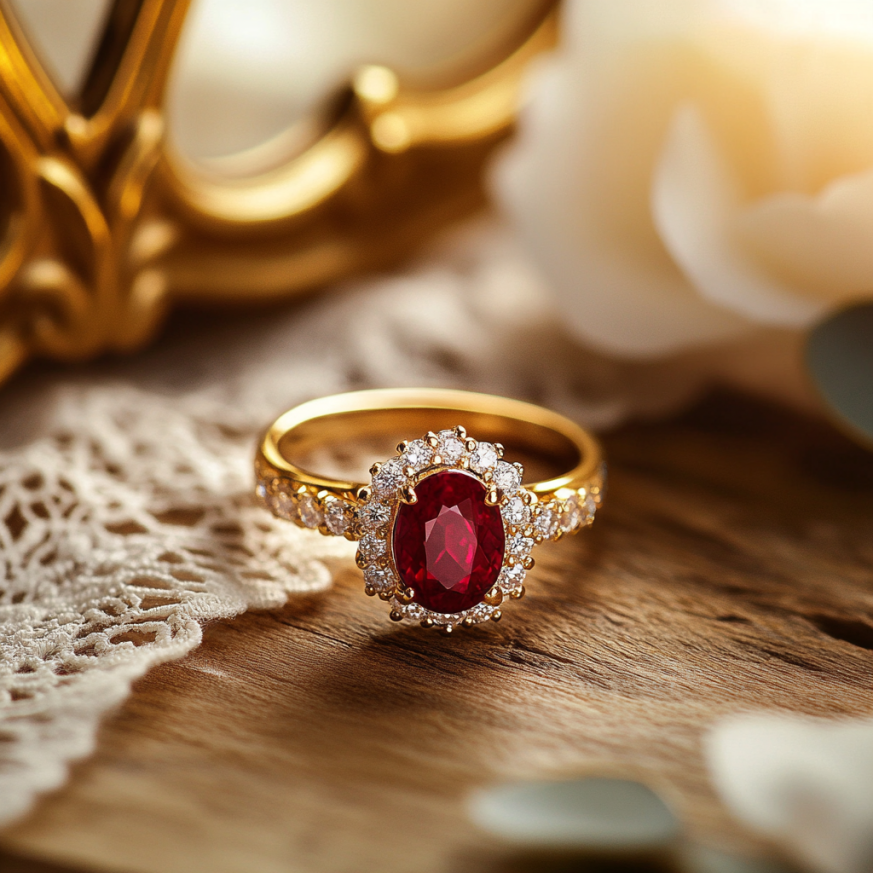
4. Three-Stone Setting – Symbolic and Stylish
A three-stone setting features a ruby flanked by two smaller diamonds or gemstones, often symbolizing the past, present, and future.
Advantages:
- Meaningful design, making it perfect for engagement or anniversary rings.
- Enhances the ruby’s presence with added brilliance.
- Offers a balance between classic and contemporary styles.
Considerations:
- Requires proper alignment to ensure visual symmetry.
- More gemstones mean more maintenance and cleaning.
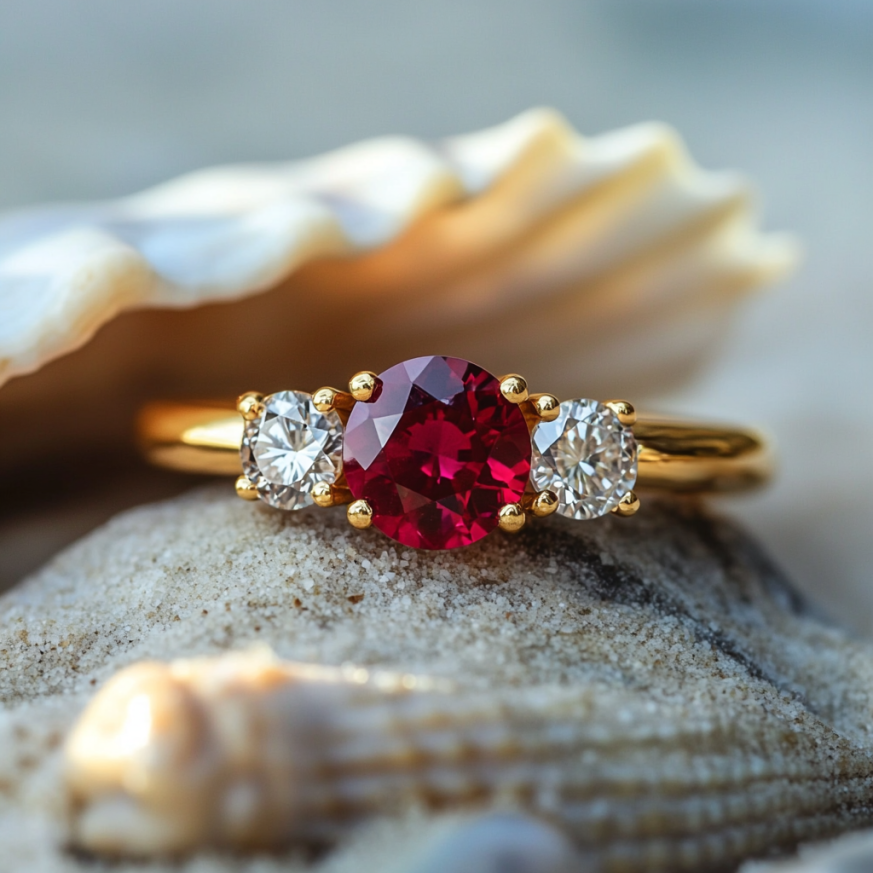
5. Vintage-Inspired Settings – Timeless Elegance
Vintage settings feature intricate metalwork, filigree, and milgrain detailing, enhancing the ruby’s regal and antique appeal.
Advantages:
- Unique, detailed craftsmanship with historical charm.
- Complements the rich, bold color of rubies.
- Ideal for those who love antique and Art Deco jewelry.
Considerations:
- More delicate than modern settings, requiring careful wear.
- Custom designs may be more expensive due to intricate metalwork.
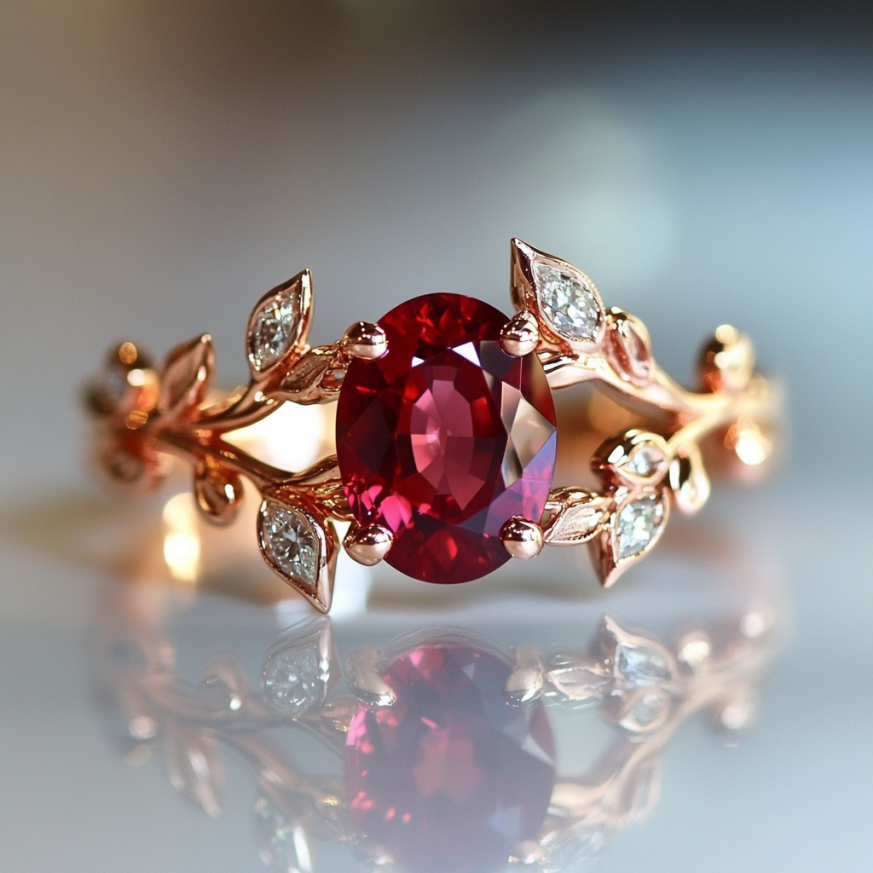
6. Tension Setting – Modern and Sleek
A tension setting holds the ruby in place using the pressure of the metal band rather than traditional prongs or bezels.
Advantages:
- Creates a contemporary, minimalist look.
- Enhances the ruby’s exposure, making it appear as if it’s floating.
- No prongs or bezels to obstruct light, maximizing brilliance.
Considerations:
- Less secure than traditional settings, as the gemstone is held by tension.
- Requires precise craftsmanship to prevent the ruby from slipping out.
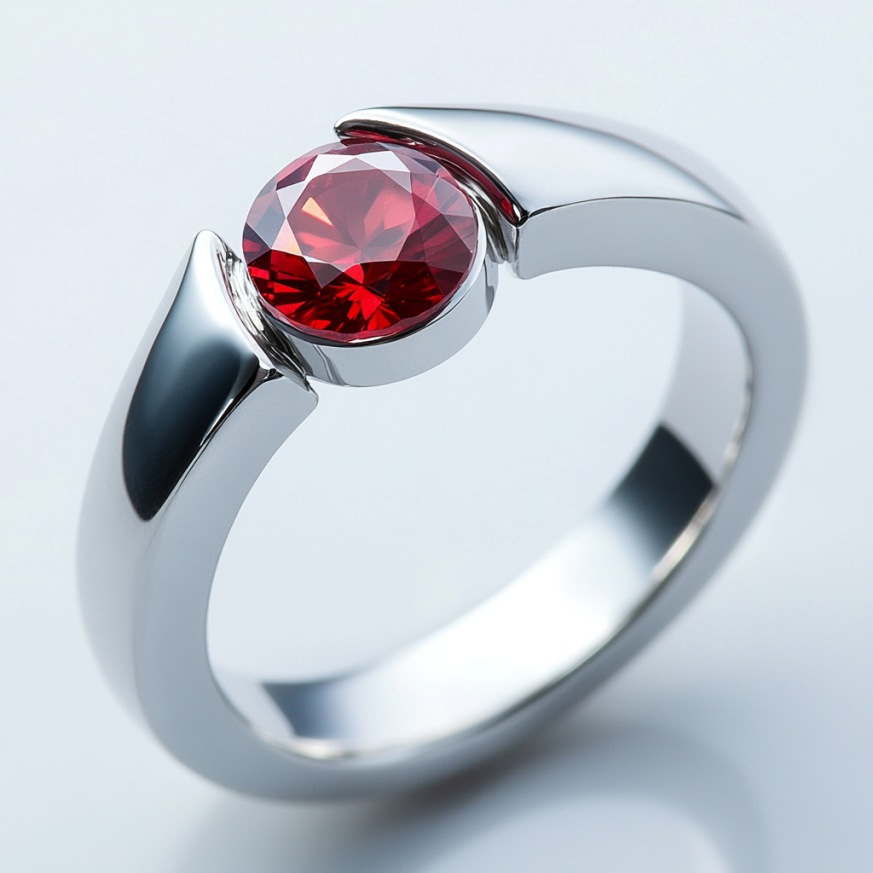
7. Cluster Setting – Affordable and Eye-Catching
A cluster setting features multiple small rubies grouped together, creating the effect of a larger center stone.
Advantages:
- More affordable than a single large ruby.
- Unique and artistic appearance.
- Can be designed in floral or geometric patterns.
Considerations:
- Requires more frequent cleaning due to multiple gemstones.
- Less traditional than solitaire or halo settings.
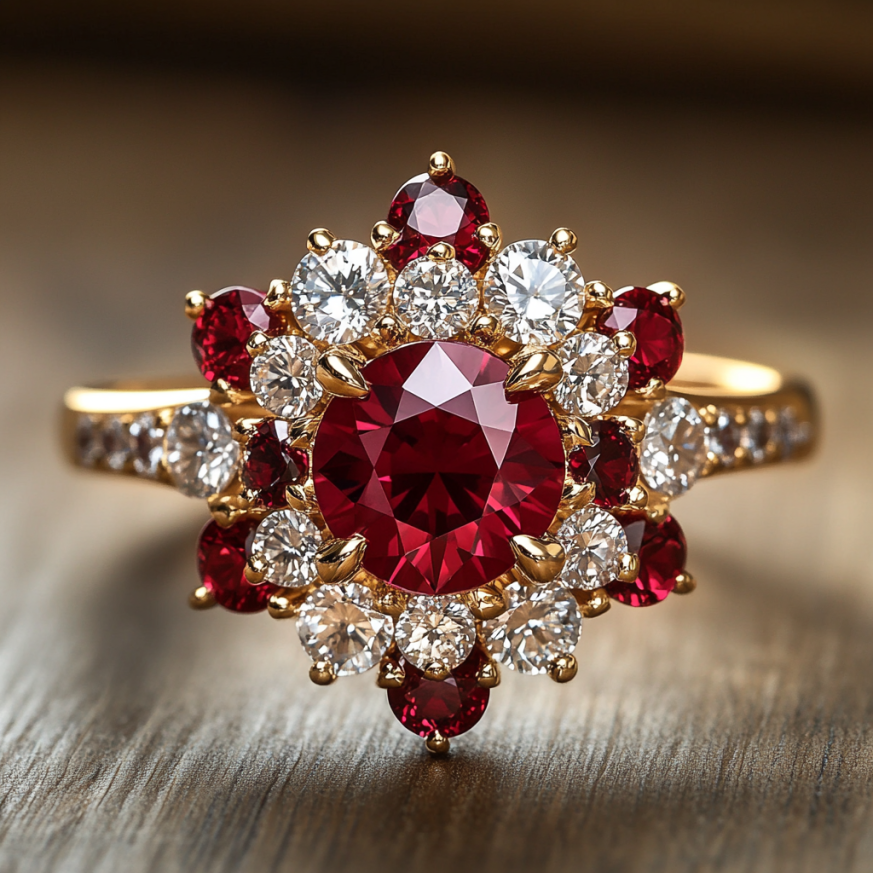
8. Cathedral Setting – Elevated and Elegant
A cathedral setting raises the ruby above the band with metal arches, adding height and grandeur to the design.
Advantages:
- Elegant and sophisticated appearance.
- Enhances the prominence of the ruby.
- Can be combined with prong or bezel settings for added security.
Considerations:
- Higher setting may make the ring more prone to impact damage.
- May require more maintenance due to intricate design.
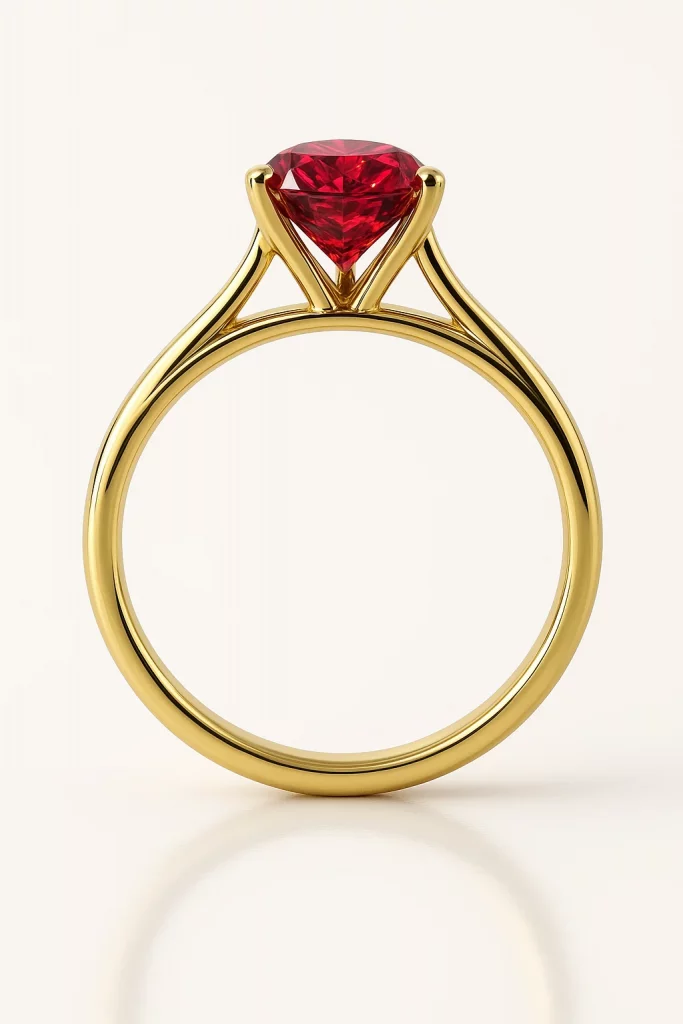
Conclusion
The Best Ruby Ring Settings depend on personal style, lifestyle, and durability needs. Prong and halo settings are among the Best Ruby Ring Settings for maximizing brilliance and showcasing the ruby’s vivid color. For those seeking added protection and a touch of vintage charm, bezel and antique-inspired designs are also considered some of the Best Ruby Ring Settings. Whether selecting a classic solitaire, a secure bezel, or a dazzling halo, the right setting will enhance the ruby’s beauty while ensuring longevity and wearability.
For more details, visit Ruby Ring Meaning Explained to discover the symbolism and significance behind wearing a ruby ring.
